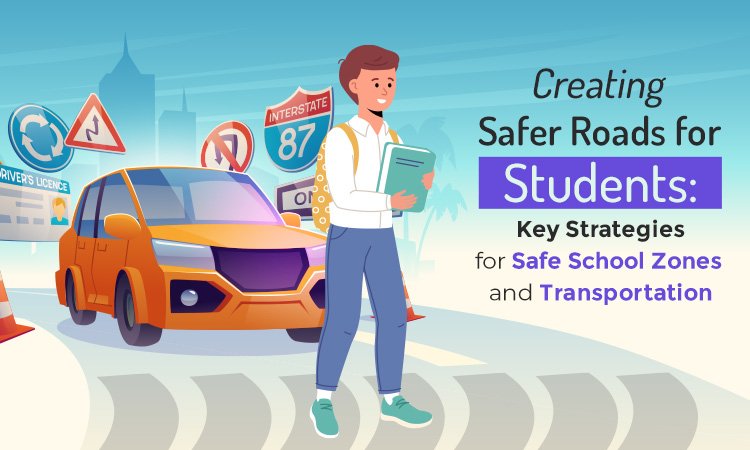
Creating Safer Roads for Students: Key Strategies for Safe School Zones and Transportation
Every child deserves a safe journey to and from school, yet alarming statistics reveal the urgent need for action. In 2023 alone, over 11,000 lives were lost near school areas, including more than 10,000 children under 18. To address this crisis, policymakers, educators, and communities must prioritize Safe School Zones, strict entry/exit protocols, and full compliance with school transportation safety standards. Here’s how we can make progress:
1. Establishing Safe School Zones
Safe School Zones are specific areas surrounding schools where traffic regulations are strictly enforced to ensure the safety of children. Key measures include:
- Reduced Speed Limits: Studies show that lowering speeds to 20 mph near schools reduces pedestrian fatalities by 80%.
- Marked Crosswalks & Signage: Only 40% of school zones have adequate crosswalks—clear markings and flashing signals improve visibility.
- Traffic Calming Measures: Speed bumps, radar speed signs, and supervised crossings deter reckless driving.
- Community Involvement: Volunteer crossing guards and “Walking School Buses” (organized groups walking together) enhance safety.
“A child struck by a car at 20 mph has a 90% chance of survival, but at 40 mph, that chance drops to just 20%.” — Safe Kids Worldwide
2. Strict Protocols for Children’s Entry/Exit During School Hours
Congested school drop-off/pick-up zones pose significant risks. Solutions include:
- Staggered Dismissal Times: Help minimize crowding and reduce chaotic traffic flow.
- Designated Kiss-and-Drop Zones: Ensures smooth transitions with clear rules (e.g., no parking in crosswalks).
- Supervised Crossings: Only authorized personnel (e.g., crossing guards) should direct traffic—volunteers must wear high-visibility vests.
- Parent Education: Campaigns on safe driving (e.g., no phone use) and pedestrian habits (e.g., using crosswalks) can reduce risks.
Case Study: NSW, Australia, mandates schools to review entry/exit risk plans and collaborate with local councils for safer routes.
3. Complete Compliance with School Bus and Van Safety Regulations
School buses are 70x safer than cars, yet lax regulations for alternative transport (e.g., vans) endanger students. Critical steps:
For School Buses:
- Fire Safety: Retrofitting buses with fire-suppression systems and flame-resistant materials prevents tragedies.
- Driver Fitness: Mandatory annual medical exams, emergency training, and background checks ensure capable drivers.
- Vehicle Inspections: Regular 50-point checks (e.g., brakes, seatbelts) and GPS tracking improve accountability.
For Alternative Transport (Vans):
- Avoid Non-Compliant Vans: Federal law bans schools from using 15-passenger vans unless they meet school bus safety standards.
- Driver Vetting: Require CDL licenses, drug testing, and specialized training for drivers of students with disabilities.
- Technology Integration: Apps like EverDriven’s VIP Portal let parents track trips in real-time.
“Students are 8x safer in a school bus than in a car—yet many districts risk lives with unregulated vans.” — NASDPTS
The Path Forward
Safer school journeys require collaboration:
- Schools: Implement Safe Zone policies, enforce traffic rules, and train staff.
- Parents: Advocate for lower speed limits and volunteer in safety programs.
- Policymakers: Enhance federal and state regulations for school buses and vans.
By implementing these measures, we can take a significant step toward eliminating fatalities in school zones.



